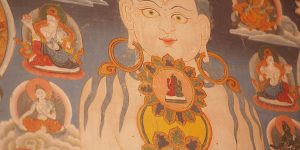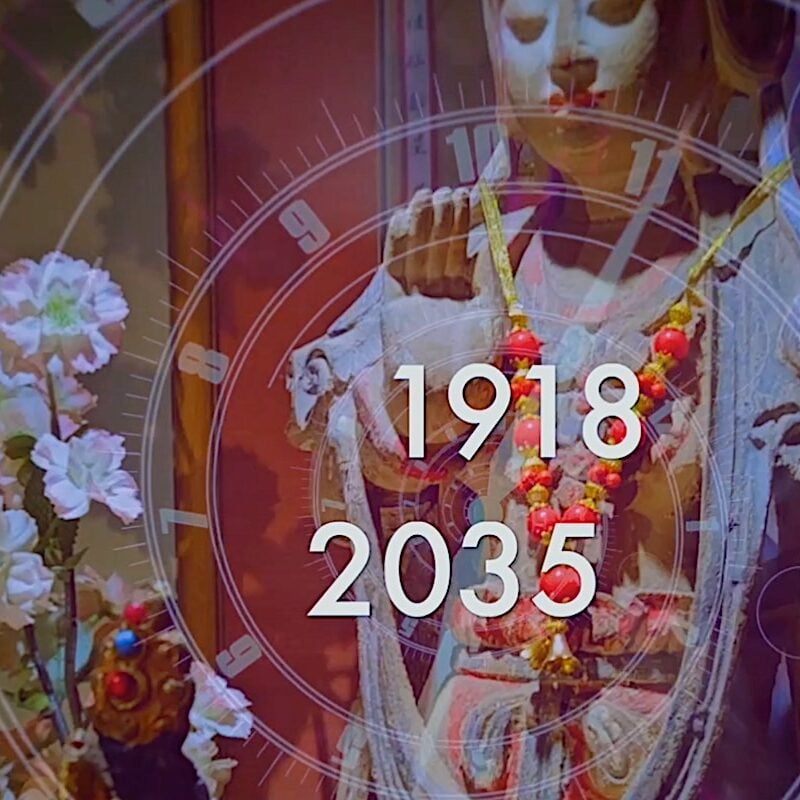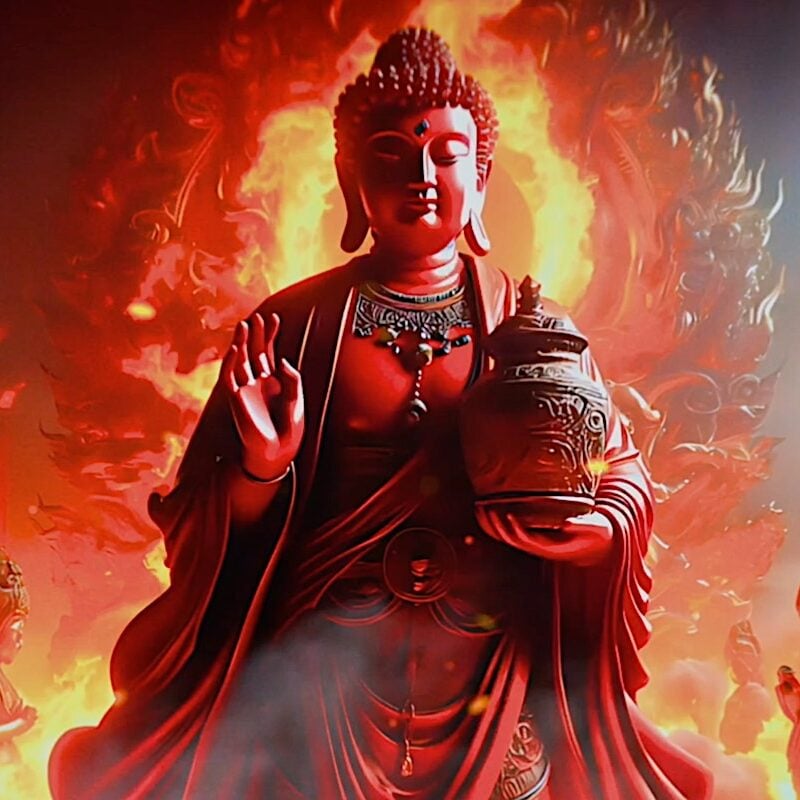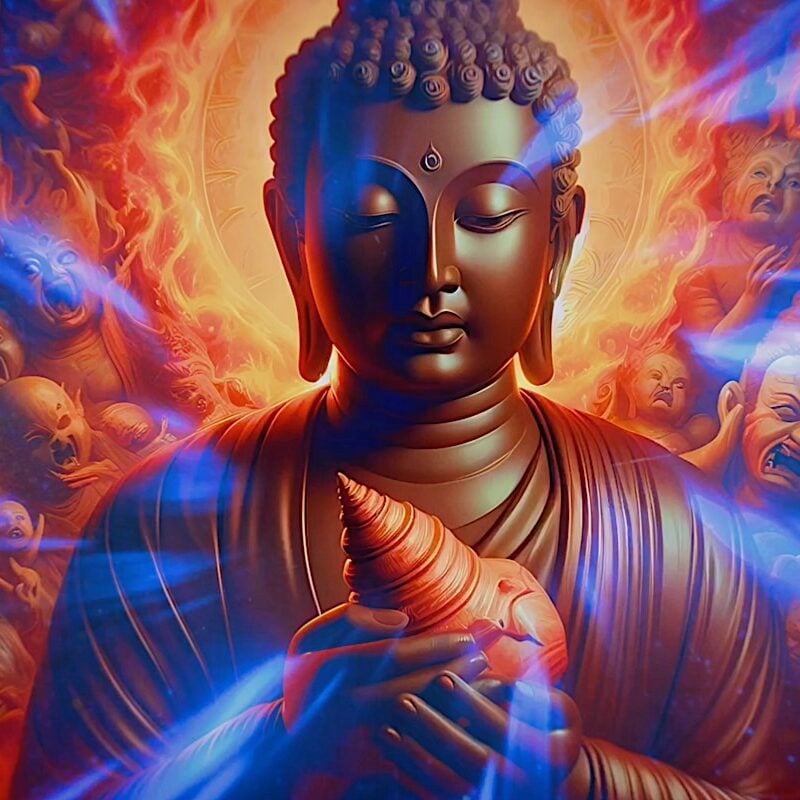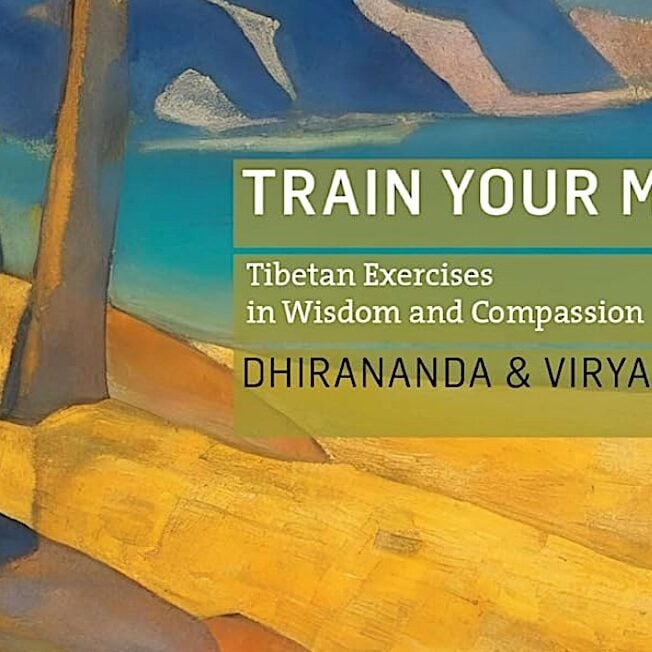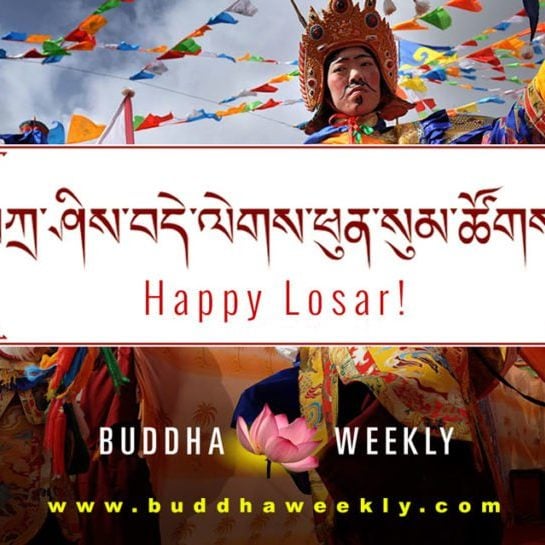Illumination: A Guide to the Buddhist Method of No-Method — book excerpt by Rebecca Li Ph.D “What Silent Illumination Is”
“Silent Illumination is often called the method of no-method because it does not ask us to focus the mind on any particular object such as the breath. There is nothing to do, but you can’t do nothing, so you have to start with something. It is a way of clear and total open awareness, moment-to-moment experience that simultaneously reveals our intrinsic enlightenment. Silent Illumination is a relaxing into the present that allows us to shed our habits of self-centered attachment—and consequently our suffering—without force, like leaves falling from a tree in autumn.” — Excerpt from Illumination: A Guide to the Buddhist Method of No-Method

We present an illuminating excerpt (below) from Rebecca Li’s soon-to-be-released book Illumination: A Guide to the Buddhist Method of No-Method, with permission.
Although a “how-to” for a method described as “no method” may seem counter-intuitive, this provocative approach suggests we “Think about what you are doing right now. You are focusing on these words and perhaps trying to figure out what I am saying. This is a convergence of moments—our learning to read and write, everything and everyone involved in the publication and distribution of this book.” The author helpfully steer us gently away from the obstacles of our own misconceptions.
She writes: “We tend not to understand our self and reality this way. We believe, “I made this happen. It is all me and me alone, fighting against the obstacles thrown at me by the world.” I would be mistaken to think that I wrote this book. The reality is we all wrote this book together. Your desire for spiritual growth is one of the causes and conditions that got publishers, editors, and booksellers interested in this endeavor. Without my teachers and the practitioners in my Dharma classes and Chan retreats, there would be nothing for me to share on these pages.”
In this excerpt she qualifies that “that language is limited in its power to accurately describe and articulate what is going on when we meditate, so we need to be very careful not to use our preconceived notions to interpret these terms.” For all the limitations of words, Rebecca Li’s concise Illumination: A Guide to the Buddhist Method of No-Method admirably guides us through the non-method of “serene clarity.”
- More about Illumination: A Guide to the Buddhist Method of No-Method
- Available October 31 2023 from the Shambala website>>
Excerpt
An Excerpt from Illumination: A Guide to the Buddhist Method of No-Method
by Rebecca Li
THE METHOD OF NO-METHOD
What Silent Illumination Is
Silent Illumination is often called the method of no-method because it does not ask us to focus the mind on any particular object such as the breath. There is nothing to do, but you can’t do nothing, so you have to start with something. It is a way of clear and total open awareness, moment-to-moment experience that simultaneously reveals our intrinsic enlightenment. Silent Illumination is a relaxing into the present that allows us to shed our habits of self-centered attachment—and consequently our suffering—without force, like leaves falling from a tree in autumn.
Beautiful words, right? However, you may be thinking, “So, you are telling me to sit here and cultivate clear awareness while seeing my intrinsic enlightenment. But if there is no method, what am I supposed to do?”
Good question.
First, it is helpful to understand a little bit about what these two words—silent and illumination—mean when it comes to Chan practice. For many people just hearing the words can cause some misunderstanding of what it is that we are doing. It is important to remember that language is limited in its power to accurately describe and articulate what is going on when we meditate, so we need to be very careful not to use our preconceived notions to interpret these terms.
Let’s start with the silent in Silent Illumination. The word might make you think, “Ah! I know exactly what it is: Blank mind. Silent mind. Nothing-going-on mind.” And you may believe you know what to do next: tell yourself to shut up as you try to silence the mind. By doing this, you can make it so that no thought arises, so that everything is completely quiet. You may create the illusion of silence by blocking thoughts from your awareness, but that is not an accurate understanding of “silence” in Silent Illumination.
Silence refers to nonreactivity to the activity of our minds—thoughts, feelings, memories, anticipation—rather than the absence of activity itself. To put it another way, silence is about not succumbing to habitual reactivity to what is going on. Of course, as many meditation teachers have said in myriad ways, this is simple but not easy. We each have a living, breathing body with a brain that works and neurons that fire, and as long as we are alive, we will experience sensations and thoughts. That is not a problem; it is not something bad that needs eliminating. It is part of being human. Entrenched within each of us is the habit of creating suffering by activating what Master Sheng Yen called vexations (kleshas in Sanskrit). The three most common vexations are as follows:
- Craving more of what we perceive to be pleasant
- Being averse to, hating, or resisting what we perceive to be unpleasant
- Harboring fundamental ignorance or lack of clarity about the true nature of existence—that every moment is the coming together of many causes and conditions, which is often referred to as emptiness (or shunyata)
Think about the times you have been in a space where everyone is supposed to be quiet—at a lecture or concert, perhaps in a library. You make a sound, and someone turns to you and says, “Shh! Be quiet.” They have not prevented the first sound and have instead made more noise. Imagine it is someone else making the noise, perhaps by dropping a cup. There is a sound and then it is gone. But if we react by saying, “What a terrible sound! Why can’t that person be more careful?” that is not silence. It is noise we added. Things happen. Thoughts arise. And then they go away. There is no need to react to them, perpetuate them, or judge them, agitating the mind unnecessarily.
Bring that kind of understanding to your meditation practice. If you are meditating and a thought arises and you tell yourself not to think, to keep quiet, or to shut up, you are making noise and agitating the mind. This is not silence. The thought is there (that is not a problem), but the noise we make in response to the thought is the opposite of the silence of Silent Illumination and comes from our habitual reactivity, no place else.
To look at it another way, you might hear the word silence and think, “Oh, silence means nothing. Nothing in the mind. How do I get rid of everything?” This is an extremely common response, this attachment to quietism. If you have that tendency, be conscious of it. Allow yourself to be clearly aware, fully experiencing whatever is going on, whatever is arising in your mind. Silence does not mean nothing is happening in the mind. Silence refers to knowing clearly what is arising there but not succumbing to the compulsion to push it away, crave more of it, block it, or deny its presence. Those are all types of mental agitation; they are not silence.
The Chinese words for Silent Illumination can also be translated as “serene clarity.” It is a helpful choice of words because serene does not immediately imply no sound, which tends to be the automatic association most of us make with the word silence. The word serene evokes tranquil, calm, unflustered, or unagitated. Letting be. For example, seeing thoughts and allowing them rather than pushing them away. Think of Silent Illumination as this practice of allowing. We can be serene about what is going on and clearly aware that there are thoughts. We needn’t fall into our compulsion to push them away or act on them; instead, we can allow the thought to be here—fully seen, heard, and experienced, and move on.
Silent Illumination is not about engaging in meditation with the hope that nothing challenging will happen in life. That is wishful thinking. Some people get stuck there as if believing they’ve found some secret deal we can make with the Buddha promising that nothing bad will happen if we meditate in just the right way. We won’t lose our jobs, our parents won’t die, our kids will get perfect grades in school— whatever we think is our perfect life. When difficult things happen, we feel that all our practice was for nothing. Check to see if you secretly harbor such beliefs. They can operate without our knowing it.
As John Crook showed me, silence does not mean that nothing happens in the mind. In fact, during meditation, whether it is sitting meditation or moving practice, powerful emotions can arise. You can be fully with whatever is in your mind, experiencing it all the way from the moment it emerges to the moment it fades to nothing, but usually that is not how we experience emotions. Maybe we feel sadness and think, “I do not want to feel that. I am strong. I am not supposed to feel sad.” Or we feel anger and think, “I am not supposed to feel angry. I’ve been taught that we are not supposed to feel angry.”
That is not silence.
When an emotion arises in response to something that happened, that is a mental sensation and through the practice of Silent Illumination you can learn to notice it and allow it to go away effortlessly. (Remember those leaves falling from the tree?) What happens is that our reaction or resistance, coming from our conditioning—very often cultural conditioning—leads us to automatically assume some inherently good or bad qualities about each sensation that compels us to react, adding judgmental thoughts—and that is not silence. This nonsilence—this agitation of the mind—blocks our ability to clearly see and realize the true nature of reality, the true nature of our self as it is. You might have read or heard podcasts, talks, and books describing this, but only you can access it in this moment.
Reality as it is. It is all here. That is illumination.
Illumination and silence are not separate. Silent Illumination is not a sequence. It is not “I’ll become silent first and then illumination will happen.” Silence and illumination are two sides of the same coin, illumination being the function of a mind that is not reactive. As we practice, we’ll come to experience illumination of everything as it is—connected, not separate. It is merely our idea that there is this and that, there is me and you, and even there is silence and there is illumination. This creates a distorted view and blocks us from seeing that everything is the manifestation of the coming together of many causes and conditions: we are all interconnected.
Think about what you are doing right now. You are focusing on these words and perhaps trying to figure out what I am saying. This is a convergence of moments—our learning to read and write, everything and everyone involved in the publication and distribution of this book, your choice of this book among all the others on the shelf, the circumstances in your life that allow you to have this moment to sit down to read. This moment is a miracle cocreated by all of this and all of us. You may stay with my words and decide to give this practice a try and allow it to transform your life, but you could as easily succumb to another thought like “I’ll just watch TV. That is what I usually do in the evening to relax.” You can follow that thought, put down the book, never return to it, and the practice of Silent Illumination will not become part of your life. Every moment, every thought and action in response to those thoughts, shapes future moments that together make up our lives. Yet we are seldom aware of the fact that we hold the key to reveal the true nature of our own lives right now in this moment.
We tend not to understand our self and reality this way. We believe, “I made this happen. It is all me and me alone, fighting against the obstacles thrown at me by the world.” I would be mistaken to think that I wrote this book. The reality is we all wrote this book together. Your desire for spiritual growth is one of the causes and conditions that got publishers, editors, and booksellers interested in this endeavor. Without my teachers and the practitioners in my Dharma classes and Chan retreats, there would be nothing for me to share on these pages. I did my part in initiating the project and carrying it through, but it would be a huge distortion of reality to think that “I” made this happen. Without the encouragement and support of everyone involved, directly or indirectly, and all the institutions in our society that make it possible for an ordinary person like me to write and publish a book, you would not be reading this. If I believe that I made this book happen through my own hard work and intellect it becomes all about me, and that is not the whole reality. Yet, subtly, one way or another, we all forget this, and when we do, we obstruct the Silent Illumination that reveals the true nature of our reality.
Excerpt from Illumination: A Guide to the Buddhist Method of No-Method. Copyright © 2023 by Rebecca Li. Reprinted with permission. All rights reserved.
About the Book
More about Illumination: A Guide to the Buddhist Method of No-Method
Available October 31 2023 from the Shambala website>>
Synopsis
Silent illumination, a way of penetrating the mind through curious inquiry, is an especially potent, accessible, and portable meditation practice perfectly suited for a time when there is so much fear, upheaval, and sorrow in our world. It is a method of reconnecting with our true nature, which encompasses all that exists and where suffering cannot touch us.
The practice of silent illumination is simple, allowing each moment to be experienced as it is in order to manifest our innate wisdom and natural capacity for compassion. It can be integrated into all aspects of daily life and is meaningful for secular and Buddhist audiences, new and seasoned meditators alike.
After guiding readers through the history and practice of silent illumination, Rebecca Li shows us how we can recognize and unlearn our “modes of operation”—habits of mind that get in the way of being fully present and engaged with life. Cultivating clarity on the empty nature of these habits offers us a way to unlearn and free ourselves from unhelpful modes such as harshness to self, perfectionism, quietism, striving for spiritual attainment, and more.
Illumination offers stories and real-life examples, references to classic Buddhist texts, and insights from Chan Master Sheng Yen to guide readers as they practice silent illumination not just on their cushions, but throughout their lives.

About the Author
More articles by this author
Search
Latest Features
Please support the "Spread the Dharma" mission as one of our heroic Dharma Supporting Members, or with a one-time donation.
Please Help Support the “Spread the Dharma” Mission!

Be a part of the noble mission as a supporting member or a patron, or a volunteer contributor of content.
The power of Dharma to help sentient beings, in part, lies in ensuring access to Buddha’s precious Dharma — the mission of Buddha Weekly. We can’t do it without you!
A non-profit association since 2007, Buddha Weekly published many feature articles, videos, and, podcasts. Please consider supporting the mission to preserve and “Spread the Dharma." Your support as either a patron or a supporting member helps defray the high costs of producing quality Dharma content. Thank you! Learn more here, or become one of our super karma heroes on Patreon.
Lee Kane
Author | Buddha Weekly
Lee Kane is the editor of Buddha Weekly, since 2007. His main focuses as a writer are mindfulness techniques, meditation, Dharma and Sutra commentaries, Buddhist practices, international perspectives and traditions, Vajrayana, Mahayana, Zen. He also covers various events.
Lee also contributes as a writer to various other online magazines and blogs.






